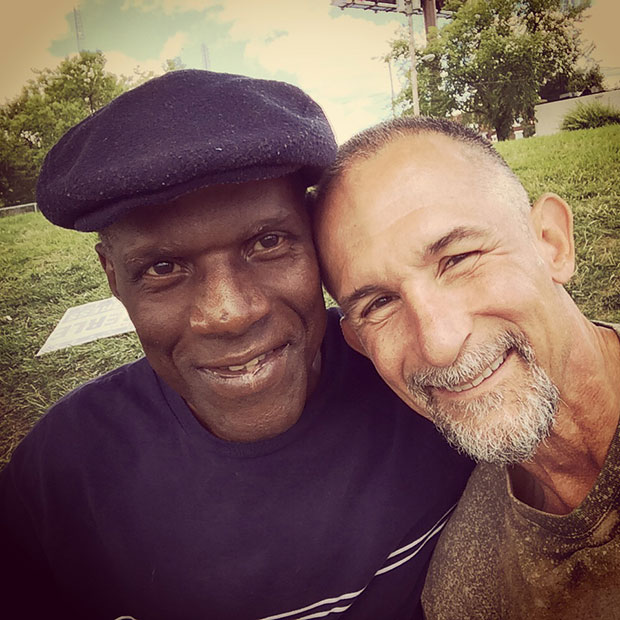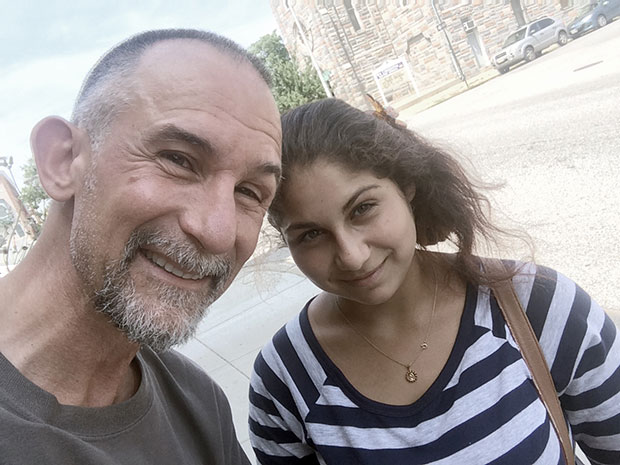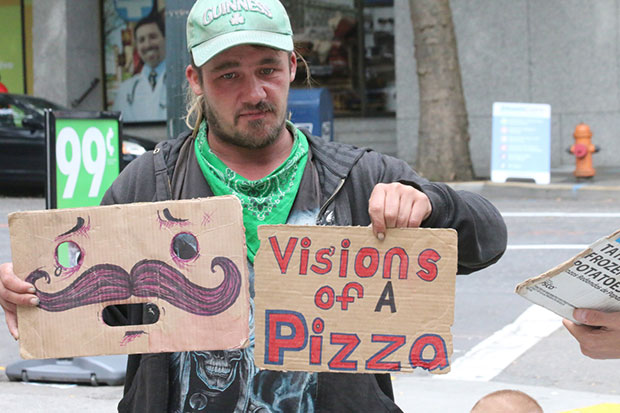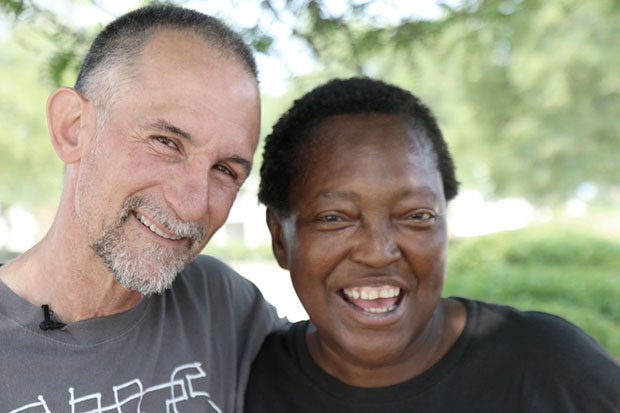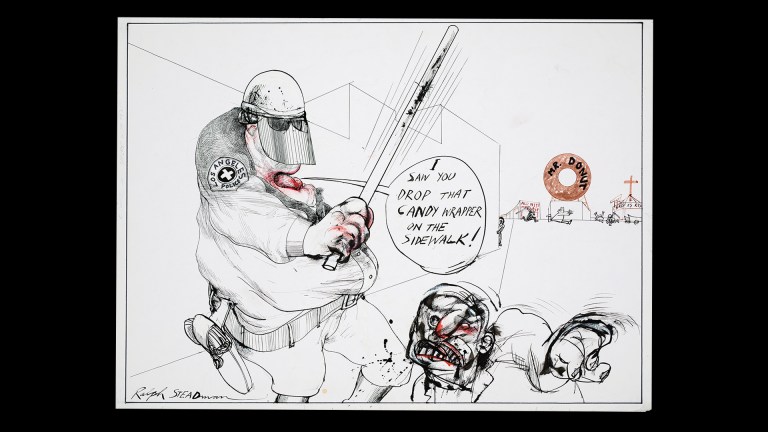In an art studio in Dallas, Texas, Willie Baronet has amassed more than 1,100 individual pieces of cardboard, each bought from the hands of homeless men and women across America. The 56-year-old’s collection varies from the colourful and creative to washed out and weathered, adorned with messages ranging from hopeful and harrowing to humorous.
A former advertising company owner turned university professor, Baronet started buying the signs in 1993. “It was a way for me to deal with my discomfort when I saw someone holding a sign,” he tells The Big Issue. “Like many people I would avert my eyes and ignore them. Buying the sign was a way to change that dynamic and start a conversation. Once I started, I couldn’t stop.”
Since then, Baronet has transformed his incredible collection into a series of art installations, under the banner We Are All Homeless. He wanted to raise awareness, and alter perceptions, of homelessness. “I realised this project had the opportunity to start many conversations and possibly cause some people to think more deeply about how compassionate we are with each other.”
I realised this project had the opportunity to start many conversations
Fast-forward to 2014 and Baronet, alongside film-maker Tim Chumley, set off on a 24-city, 31-day cross-country trip, from Seattle to New York. After raising $48,000 via crowdfunding, they travelled 7,620 miles, bought 282 signs and interviewed more than 100 people they met along the way. Their journey has been brought to life in the film Signs of Humanity, which premiered at the Dallas International Film Festival last month.
Baronet has, he admits, questioned whether this is exploitative. “I’ve struggled with that. I try my best to be very kind and respectful about the interaction. I don’t photograph or video anyone without their permission.”
Indeed, he always asks for the individual to set the price. Most signs sell for around $10 to $20 but he has paid anything between $4 and $50. In total, Baronet estimates he’s spent $13,000. “Very few haven’t been willing to sell their signs but some have,” he explains. “I don’t always know why. Some wanted more money than I was willing to spend. The most I’ve ever paid was $50 in New York to a man who had no legs and couldn’t speak.”

